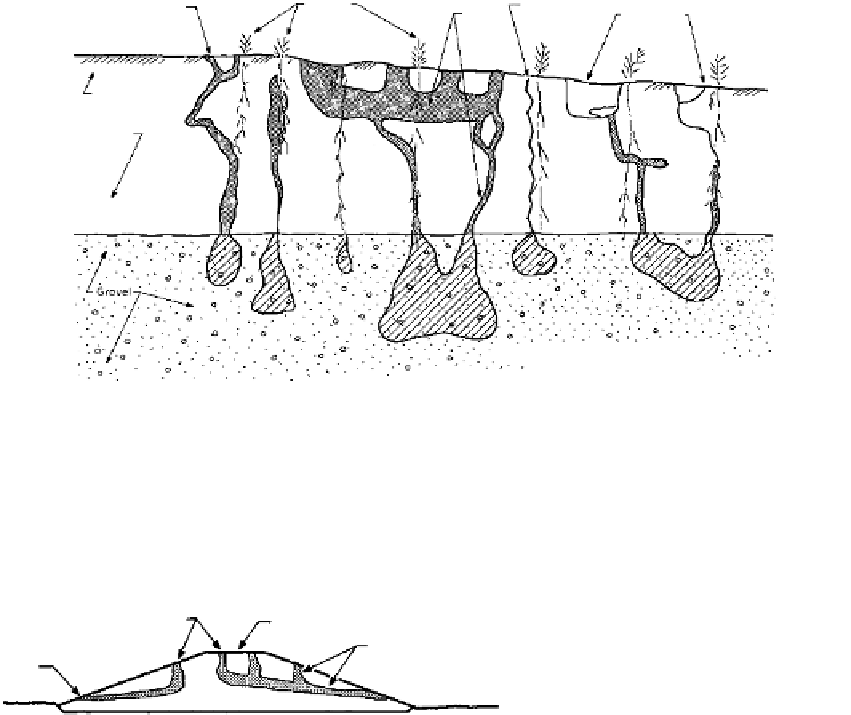Environmental Engineering Reference
In-Depth Information
Shrinkage
crack
Gopher holes
Alfalfa
Piping
Sink holes
Dispersive
clay
(About 12ft
thick)
Dispersed clay particles are carried
into voids in gravel
FIGURE 10.37
Damage to agricultural fields in Arizona from piping and sinkhole formation in dispersive clays. (From
Sherard, J.L. et al.,
Proceedings ASCE,
Purdue University, Vol. I, 1972. With permission.)
0
20
40
ft
Approximate scale
FIGURE 10.38
Schematic of typical rainfall erosion tunnels
in clay flood-control dike in badly damaged
section. (From Sherard, J.L. et al.,
Proceedings
ASCE,
Purdue University, Vol. I, 1972. With
permission.)
Tunnel entrances
Crest of dike
Erosion tunnels
Tunnel
exit
(calcium and magnesium), i.e., the higher the percentage of sodium cation, the higher the
susceptibility to dispersion. Soil scientists refer to this relationship as “exchangeable
sodium percentages” (ESP) (see also
Section 5.3.3).
As of 1976, there appeared to be no good relationship between the ESP and the index
tests used by the geotechnical engineer to classify soils, except for the identification of
expansive clays that are nonsusceptible. Highly dispersive clays frequently have the same
Atterberg limits, gradation, and compaction characteristics as nondispersive clays. These
clays plot above the
A
line on the plasticity chart (see
Figure 3.12)
and are generally of low
to medium plasticity (LL
30-50%; CL-CH classifications), although cases of dispersion
have been reported in clay with a high liquid limit.
The pinhole test
is a simple laboratory test developed to identify dispersive clays (Sherard
et al., 1976).
Prevention of Piping and Dispersion
Piping in natural deposits
is difficult to prevent. The formation of large tunnels is rare and
limited to loose, slightly cohesive silty soils where they are exposed in banks and steep
slopes and seepage can exit from the slope. A practical preventive measure is to place a fil-
ter at the erosion tunnel outlet to reduce flow exit velocities, but in some cases such as
shown in
Figure 10.36,
the area should be avoided since tunnels are likely to open at other
locations.



